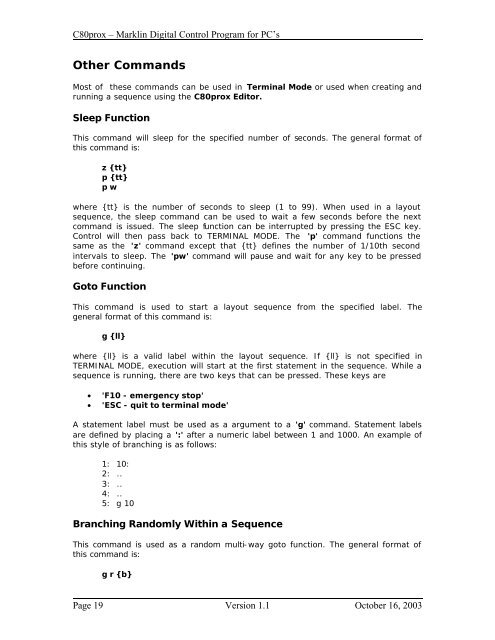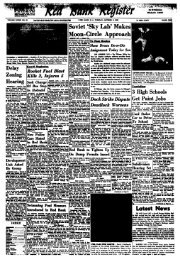C80prox Marklin Digital Control Program for PC's
C80prox Marklin Digital Control Program for PC's
C80prox Marklin Digital Control Program for PC's
You also want an ePaper? Increase the reach of your titles
YUMPU automatically turns print PDFs into web optimized ePapers that Google loves.
<strong>C80prox</strong> – <strong>Marklin</strong> <strong>Digital</strong> <strong>Control</strong> <strong>Program</strong> <strong>for</strong> PC’s<br />
Other Commands<br />
Most of these commands can be used in Terminal Mode or used when creating and<br />
running a sequence using the <strong>C80prox</strong> Editor.<br />
Sleep Function<br />
This command will sleep <strong>for</strong> the specified number of seconds. The general <strong>for</strong>mat of<br />
this command is:<br />
z {tt}<br />
p {tt}<br />
p w<br />
where {tt} is the number of seconds to sleep (1 to 99). When used in a layout<br />
sequence, the sleep command can be used to wait a few seconds be<strong>for</strong>e the next<br />
command is issued. The sleep function can be interrupted by pressing the ESC key.<br />
<strong>Control</strong> will then pass back to TERMINAL MODE. The 'p' command functions the<br />
same as the 'z' command except that {tt} defines the number of 1/10th second<br />
intervals to sleep. The 'pw' command will pause and wait <strong>for</strong> any key to be pressed<br />
be<strong>for</strong>e continuing.<br />
Goto Function<br />
This command is used to start a layout sequence from the specified label. The<br />
general <strong>for</strong>mat of this command is:<br />
g {ll}<br />
where {ll} is a valid label within the layout sequence. If {ll} is not specified in<br />
TERMINAL MODE, execution will start at the first statement in the sequence. While a<br />
sequence is running, there are two keys that can be pressed. These keys are<br />
• 'F10 - emergency stop'<br />
• 'ESC - quit to terminal mode'<br />
A statement label must be used as a argument to a 'g' command. Statement labels<br />
are defined by placing a ':' after a numeric label between 1 and 1000. An example of<br />
this style of branching is as follows:<br />
1: 10:<br />
2: ..<br />
3: ..<br />
4: ..<br />
5: g 10<br />
Branching Randomly Within a Sequence<br />
This command is used as a random multi-way goto function. The general <strong>for</strong>mat of<br />
this command is:<br />
g r {b}<br />
Page 19 Version 1.1 October 16, 2003




